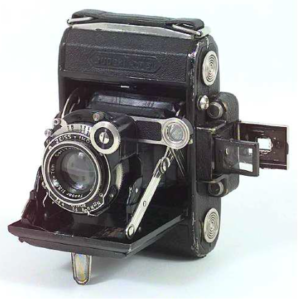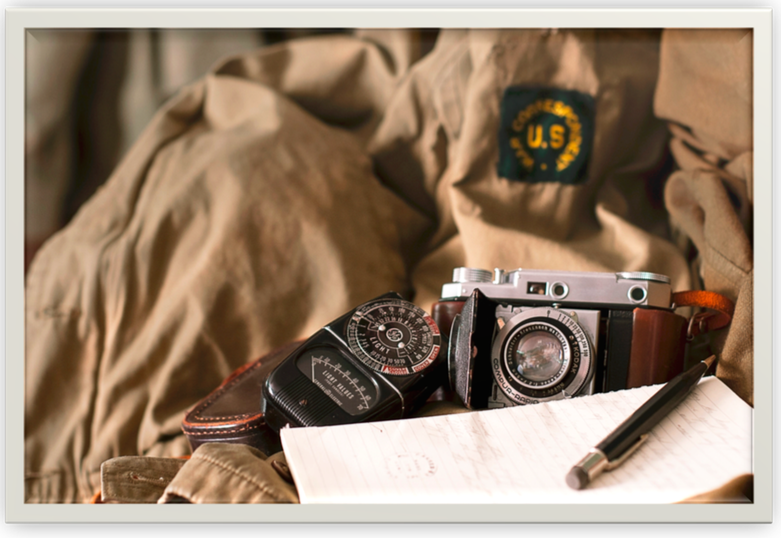
Cameras for the World War II Reenactor
This article was written by a friend of mine Corey Hodgson, reprinted as permitted. If you have any specific questions you may contact him: chodgson1945@gmail.com, with the subject line “GI camera guide”. You may also download a copy of this article in a pdf format here.
The following guide is an attempt to inform WWII reenactors, portraying typical US soldier in Europe. While the guide can be used for those portraying infantry and Marines in various other parts of the global conflict, be sure to research what cameras would be available to a soldier (for example: a Leica or other German made cameras would be next to impossible to obtain for a Marine on Tarawa).
This guide is not meant to be a guide for those wishing to portray a War Correspondent or a member of the United States Signal Corps. While some did choose to use 35mm and 120mm cameras (Like Robert Capa, who chose to use Leica, Contax, and Rollei branded cameras throughout his time in the Mediterranean and European Theater of Operations), the primary choice for the Signal Corps was the trusted Graflex Anniversary Speed Graphic, with its massive 4×5 negative. Please research your specific impression before purchasing any cameras, as you can easily spend a great deal on something you cannot (or rather should not) use.
Cameras we obtained in three major ways: Gifted to the soldier, purchased by the soldier, and stolen by the soldier.
Rollei
A twin lens reflex is a camera that has two lenses, stacked one above the other, that allows the user to focus using the top one, and expose a 6x6cm negative on 120mm film. The Rollei has, and still is, a rather expensive camera. The build quality is above average, being created for professionals, most lasting longer than the original owners themselves. Robert Capa was known to use a Rolleiflex “Old Standard” (made before 1939) during his WWII travels.
Appropriate for use would be the Rolleiflex Original, Standard, New Standard, Baby 4×4 (all pre-war models made from 1931-1943) Automat Model 1, and Automat Model 2. Also appropriate would be the cheaper entry level Rolleicord, any models manufactured between 1933 and 1949 (The Models Ia Type 3 and IIc were both manufactured through the war and continued for a few years after the war).
A word of warning though, the average GI attempted to reduce weight as often as possible, and a Rollei TLR is not the smallest or lightest camera available. Therefore I highly recommend that you avoid taking this camera in the field, instead using it as a “pre-invasion” camp camera. These cameras would have also been very expensive, costing far more than the average GI could afford.
A cheaper alternative would be the Ciroflex Model A, manufactured in Detroit, Michigan prior to the war and then in Delaware, Ohio during the war. Only the Model A was made during the war. Also available would be the Primarflex I made in Germany prior to the war.
For more information on Rolleiflex cameras and models:
http://camerapedia.wikia.com/wiki/Rolleiflex
For more information on Rolleicord cameras and models:
http://camerapedia.wikia.com/wiki/Rolleicord
Original (New and Old Standard made between 1932-1941) Rolleiflex cameras look like this:
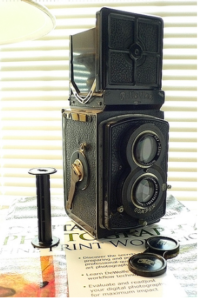
While Rolleiflex Automats (Models 1 and 2 made between 1937 – 1945) look like this:
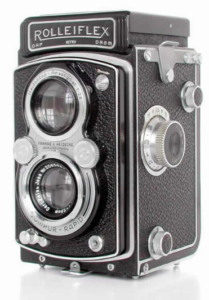
Leica
Just as it is today, the Leica brand was one that was known world wide for quality and an enormous price tag. There are two types of Leica cameras to look at: With a Rangefinder and without a Rangefinder.
Unlike today’s cameras, which allow you see what you shoot before you shoot it, a rangefinder shows the photographer only what will be in focus. A rangefinder splits the image and when the photographer makes the two images overlap perfectly (creating one image on the item you wish to focus on), the focus is set and the picture can be taken. Without a rangefinder, the photographer has to either know or guess the distance between the camera and the subject.
Leica cameras load from the bottom, and I would highly suggest you do independent reading on cutting and loading film for any Leica or Leica copy (the Soviet made Zorki and FED cameras) as the film leader must be cut to load film into vintage Leicas.
Acceptable models for use are Leica I, Ic, IIc, IIIa, IIIb, and IIIc. Avoid all gold versions, or ones marked with Luftwaffe markings (and other Nazi markings on the top). 9 out of 10 times, these cameras are going to be fakes and while they might be mechanically sound – they usually aren’t due to them being bastardized Soviet copies (A Soviet Copy of a German camera, made to look like a German camera).
Leica cameras are relatively expensive, and again, the average GI would not have ordinary access to any of the cameras – unless they stole them or found them.
Soviet models, that would be acceptable for just playing around with, include any of the FED 1’s (not the 2, 3, 4 or 5!) and the Zorki 1 and 2.
For more information on Leica Cameras:
http://camerapedia.wikia.com/wiki/Leica For More Information on Soviet Leica copies:
http://fedka.com/Frames/Main_Frame.htm
A typical Leica I:
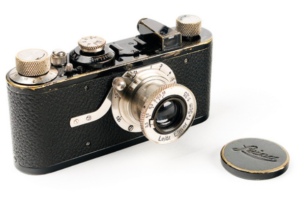
A typical Leica IIIc:
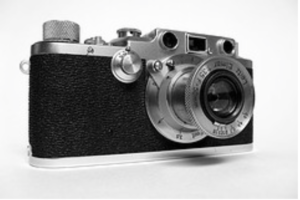
Argus
Made in Ann Arbor, Michigan, the Argus A and Argus C3 popularized the 35mm format in the United States. These cameras were relatively inexpensive for consumers to purchase, and were very common.
The cameras take 35mm film, are built like bricks (the C3 was, and still is, affectionately named “The Brick”), and are very durable. These would be more common amongst the average Joe. For more information on the Argus: http://camerapedia.wikia.com/wiki/Argus
Typical Argus A:

Typical Argus C3:
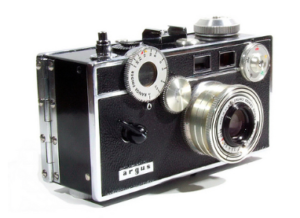
Kodak
Kodak produced many inexpensive cameras, made to encourage everyone to enjoy photography (and purchase the film that Kodak produced). Cameras were manufactured in two primary locations: The Rochester, New York factory, and the Kodak AG factory in Stuttgart Germany.
Acceptable Models: Kodak 35, Kodak 35 RF (not very common due to the $48 USD pricetag – $700 USD in 2007), PH 324 (Very rare and not suggested because of that. Due to the US government’s contract with Kodak, the PH 324 cameras were collected and bulldozed as to not flood the commercial market), Retina I (Types 117, 118, 119, 126, 141, 143, 148, 149, 167), and Retina II (Types 122 and 142).
Retina cameras were made by Kodak AG in Germany, and after 1941, the production ceased for the remainder of the Second World War.
For More information on the Kodak Retina I: http://camerapedia.wikia.com/wiki/Kodak_Retina_(folding)
For more information on the Kodak Retina II:
http://camerapedia.wikia.com/wiki/Kodak_Retina_II
For More information on the Kodak 35:
http://camerapedia.wikia.com/wiki/Kodak_35
For more information on the Kodak 35RF:
http://camerapedia.wikia.com/wiki/Kodak_35_RF
Typical Kodak Retina I Type 126:
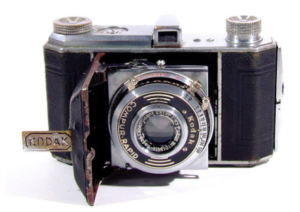
Typical Kodak 35:
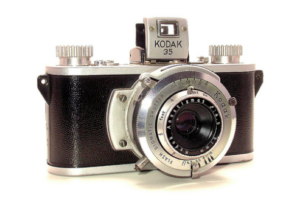
Typical Kodak 35 RF:
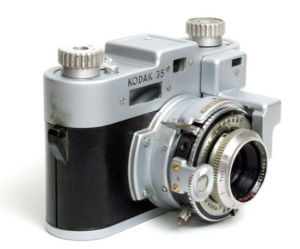
Typical Kodak Retina II Type 122:
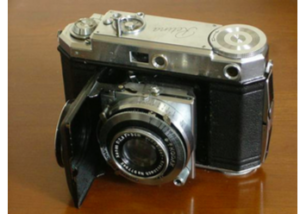
Contax
On the success of Leica, another German company (Zeiss Ikon) created the Contax I to compete with Leica. These high-end models were known for their wonderful focusing abilities, a removable back for loading film, a quick and reliable brass shutter, and a new bayonet mount lens system (as opposed to Leica’s screw mount lens system).
There are three acceptable models for the time period: The Contax I, II and III. The III has a selenium light meter on the top to calculate exposures with. While this feature was revolutionary at the cameras creation in 1936, today this feature is at best, barely accurate. It is best to use a different form of metering for your exposures, as over time the selenium cells have grown to be less accurate than at their creation. After the war, Contax began production in West Germany of the Contax IIa and IIIa. These cameras are also acceptable for use as they are hard to distinguish between the pre-war models (the rangefinder window is smaller, but these cameras are still recommended over the Soviet Copies).
These cameras would not be common amongst the average GI, instead being common in the hands of professional photojournalists like Robert Capa.
There are Soviet copies of the Contax II & III, as the Soviets had taken the machinery from the factory and brought them back home as war spoils – in fact, the Soviets brought back not only the machinery used to make the Contax cameras, but they brought back ALL the parts the remained. This actually resulted in the first batch of Kiev II cameras having the Contax logo on the inside – with the Soviet KIEV printed on the front. Models that are suggested are the Kiev II and the Kiev III. The Kiev 4 features a different appearance and it is generally not suggested you purchase one for reenacting. The author has used the Kiev II in reenacting previously, and while the camera performed well, the KIEV print on the front stood out rather well. Soviet copies should be avoided if you are looking for a 100% authentic impression.
For more information on Contax Cameras:
http://camerapedia.wikia.com/wiki/Contax_rangefinder
For information on Soviet Copies:
http://camerapedia.wikia.com/wiki/Kiev_rangefinder
Typical Contax I:
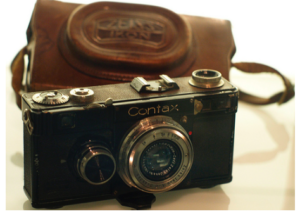
Typical Contax II:
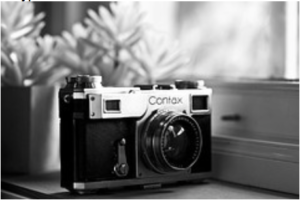
Typical Contax III:
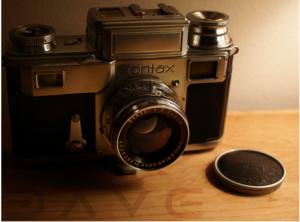
Zeiss Ikon
In Germany the two major producers of optics and camera equipment were Zeiss and Leica. Zeiss Ikon was the product of four major German camera companies in 1926. Known for innovation, quality, and for their excellent medium format cameras, Zeiss Ikon cameras were fairly common – in the authors view they were along the lines of Kodak in America.
Zeiss Ikon produced many 120mm folders, including the Nettar, Ikonta, and Super Ikonta (an Ikonta folder with a coupled rangefinder). Acceptable models for the use by reenactors include the Nettel, Super Nettel I & II, Nettax, Nettar (510, 510/2, 515, 515/2 and 515/16), Ikonta (A, B, and C models that begin with 520 or 521), and Super Ikonta (A, B, and C). For specific information on the many models, please do research on Camerapedia or on Pacific Rim Camera.
For more information on Zeis Ikon:
http://camerapedia.wikia.com/wiki/Zeiss-Ikon
For More information on Ikonta and Super Ikonta cameras:
http://www.pacificrimcamera.com/pp/zeiss/sikonta/sikonta.htm http://www.pacificrimcamera.com/pp/zeiss/ikonta/ikonta.htm
Typical Super Ikonta B 530-16:
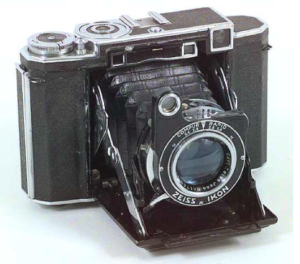
Typical Ikonta 520 Series:
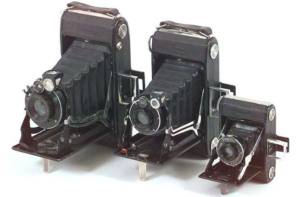
Typical Super Ikonta A 530:
